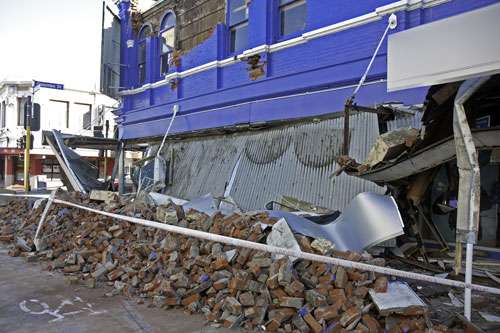Modelling seismics and explosions

Researchers at the University of Sydney are developing mathematical models that can help in reducing rock fracturing and soil liquefaction caused by natural or man-made disasters.
According to Dr Luming Shen chief investigator on the study, the outcomes of the research could improve safety levels in the mining and petroleum industries, and play a critical role in the ability of civil infrastructure to withstand disasters such as earthquakes and explosions.
Dr Shen, senior lecturer at the School of Civil Engineering, says the study of the dynamic behaviour of unsaturated porous media under extreme loading is in its infancy and the team's project is breaking new ground in the field of geotechnical earthquake engineering.
"It is a new and vital component of geotechnical earthquake engineering and could hold the key to solving a number of issues associated with seismic damage of underground structures" he states.
Extreme loading such as explosives or earthquakes generates stress wave propagation through unsaturated granular media and can lead, for example, to rock fracturing Dr Shen says.
"A fracture can divide the rock into two or more pieces and form a deep fissure or crevice in the rock. It usually occurs when stress exceeds the rock strength, causing the rock to lose cohesion along its weakest plane," explains Dr Shen.
Soil liquefaction can also occur, causing severe damage to vital infrastructures says co-investigator, Dr Abbas El-Zein, Associate Professor, who is also based in the School of Civil Engineering and lectures in geo-environmental Engineering.
"Understanding the response of unsaturated porous media to high-rate loading will assist in reducing seismic damage to underground structures such as tunnels or rail lines.
"It would also assist in the control of blast-induced fragmentation in block cave mining, and the reduction of contaminant transport through fractures in porous rock," he says.
The team recently received an Australian Research Council Discovery Projects grant to investigate unsaturated porous media under extreme loading and to develop an experimentally-validated theory with applicable models.
During the three-year project they will work in collaboration with University of Adelaide academics and plan to analyse a wide spectrum of strain rates and saturations.
"We will conduct mesoscale experiments, studying the interactions between the solid, liquid and gas phases and compare the results to macroscopic or humanly visible dynamic responses" says Dr Shen.
Provided by University of Sydney


















